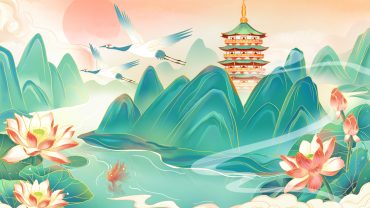Wisdom Revitalized: Unveiling the Mysteries of Traditional Chinese Medicine
Content Preview
Traditional Chinese Medicine (TCM) is an ancient medical tradition, born from myths and legends, and has evolved over thousands of years. The writing of “The Yellow Emperor’s Inner Canon” marked the beginning of a formalized TCM theory, covering medical theory, anatomy, physiology, and pathology. With branches like acupuncture, herbal medicine, massage, and Qigong, TCM holds a revered place in Chinese culture and is closely tied to Chinese philosophy and ways of life. It shows the profound impact of TCM as a holistic system that blends healthcare, philosophy, and the art of living together.
All VISA-related queries are covered in China Travel Guide (Updated January 23, 2024)
For a quick overview, check out China’s 144-hour Visa-Free Policy
Or Plan your Trip to China can help you

The Origins and Development of TCM
Traditional Chinese Medicine (TCM), with its thousands of years of history, traces back to ancient myths and legends. The earliest medical text, “The Yellow Emperor’s Classic of Internal Medicine,” believed to have been written around the 2nd millennium BCE, marked the initial formation of TCM’s theoretical system. This text covers medical theory, anatomy, physiology, pathology, diagnostics, and preventive medicine, laying the foundation for the future development of TCM.
From the Han dynasty onwards, with the publication of classics such as the “Treatise on Cold Damage Disorders” and “Essential Prescriptions from the Golden Cabinet,” TCM gradually matured, especially in pharmacology and clinical treatment. During the Tang dynasty, herbal medicine was further developed with the compilation of the “Newly Revised Materia Medica.” The Song dynasty saw an improvement in the TCM education system, thanks to the government’s emphasis on medical education.
Entering the modern era, TCM began to interact with Western medicine, particularly in the 20th century, absorbing theories and techniques to modernize. Today, TCM is increasingly recognized and valued not just in China but around the world.
Different Types of TCM
TCM is a comprehensive system that includes a variety of treatment methods and techniques. Some of the most popular branches include:
Acupuncture: A method that involves inserting very fine needles into specific points on the skin to regulate body functions. It’s based on the TCM “meridian” system, key to regulating blood and organ functions.
Herbal Medicine: TCM pharmacotherapy relies on unique formulations of herbs, which can be plant, animal, or mineral-based. Known for its holistic approach, it aims to harmonize the body’s internal balance.
Tui Na (Massage): A physical therapy that adjusts the body’s blood flow and meridian functions through massage techniques. Tui Na is used for both treatment and wellness.
Qigong: A practice combining movement, breathing, and meditation to cultivate and balance the body’s “qi” (vital energy), used for health improvement and mental state.
These branches each have their unique therapeutic principles and applications. They can be used alone or in combination with other methods for optimal treatment effects.

The Magic and Stories of TCM
The “magic” of TCM largely stems from its unique treatment methods and rich cultural connotations. Here are examples and stories that showcase the magic of TCM:
Remarkable Treatment Effects: In many cases, TCM has cured diseases that Western medicine found challenging. For instance, acupuncture and herbal medicine have significantly relieved chronic pain and digestive system diseases for some patients, reflecting TCM’s unique advantage in regulating bodily functions and restoring balance.
Moving Stories: The history of TCM is filled with stories about its practitioners. The ancient physician Hua Tuo is renowned for his medical skills and benevolence, inventing the “Five Animal Frolics” still used in health care today. Another example is Sun Simiao, known as the “King of Medicine,” who made significant contributions to the development of pharmacology in TCM.
Exploring TCM: A Travel Guide
Visiting TCM Museums
China’s TCM museums, such as the one at Beijing University of Chinese Medicine, are perfect for exploring the rich history and culture of TCM. They house a vast collection of ancient medical texts, herbal specimens, and traditional medical instruments, showing the diversity and complexity of ancient medical practices. Visitors can gain insights into the origins and preparation of Chinese herbs and the wisdom of ancient physicians through exhibits like grinding slabs for medicine and ancient acupuncture needles, as well as through interactive exhibitions and expert explanations.
Experiencing TCM Clinics and Wellness Centers
Visiting TCM clinics and wellness centers offers a hands-on experience with TCM treatments and philosophies. At TCM clinics, visitors can undergo traditional diagnostic processes, such as pulse and tongue diagnosis, allowing practitioners to tailor treatment plans. Wellness centers provide various TCM therapies like massage, cupping, and scraping, aimed at promoting self-healing and energy flow for health and balance. Many also offer medicinal baths, foot therapy, and other traditional wellness services based on the theory of Yin-Yang and the Five Elements, enhancing health and disease prevention through internal balance.
Trying TCM Therapies and Wellness Cuisine
Experiencing TCM therapies and wellness cuisine is another key aspect of exploring traditional Chinese medicine. Therapies like medicinal baths and foot therapy use the natural properties of herbs to promote health, aiding in pain relief and circulation. TCM dietary therapy emphasizes food’s role in adjusting body health, with choices based on individual constitution and seasonal changes, reflecting the practice of medicine and food sharing the same source. This approach to dining is a daily practice of wellness, showcasing the integration of TCM into living a balanced and healthy lifestyle.

The Role of TCM in Chinese Culture
TCM is not just a method for treating physical ailments but a significant manifestation of ancient Chinese philosophical thoughts, deeply rooted in the theory of Yin-Yang and the Five Elements, which views the universe and the human body as interconnected. TCM’s role throughout Chinese history has been indispensable, serving the health needs of the public and the imperial medical system, reflecting its influence in daily life from dietary habits to health maintenance.
TCM’s integration with Chinese philosophy and lifestyle, especially Daoist and Confucian ideas, emphasizes living in harmony with natural laws and achieving balance in body and mind. Practices like Tai Chi and Qigong, dietary habits, and mental well-being exercises illustrate the deep fusion of TCM with Chinese philosophy and daily life, promoting a preventive approach to health and longevity.





Comment (0)